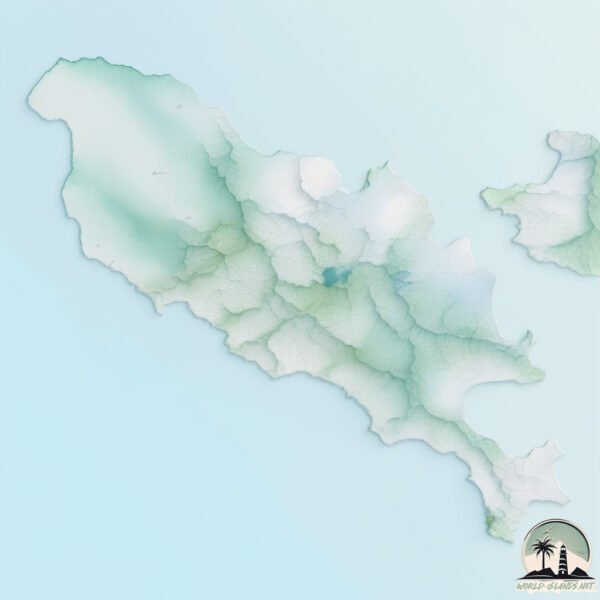Lubang

Welcome to Lubang, a Tropical island in the Philippine Sea, part of the majestic Pacific Ocean. This guide offers a comprehensive overview of what makes Lubang unique – from its geography and climate to its population, infrastructure, and beyond. Dive into the details:
- Geography and Size: Explore the island’s size and location.
- Climate and Weather: Weather patterns and temperature.
- Topography and Nature: Uncover the natural wonders of the island.
- Infrastructure and Travelling: Insights on reaching, staying, and making the most of your visit.
- News and Headlines: Latest News.
Geography and size of Lubang
Size: 196.4 km²
Coastline: 100.4 km
Ocean: Pacific Ocean
Sea: Philippine Sea
Continent: Asia
Lubang is a Large Island spanning 196 km² with a coastline of 100 km.
Archipel: Malay Archipelago – The world’s largest archipelago, located between mainland Southeast Asia and Australia, known for its immense biodiversity and cultural diversity.
Tectonic Plate: Sunda – Extends across Southeast Asia, encompassing parts of the Sunda Shelf, known for its interaction with the Australian Plate, contributing to volcanic activity in Indonesia.
The geographic heart of the island is pinpointed at these coordinates:
Latitude: 13.78233098 / Longitude: 120.18308661
Climate and weather of Lubang
Climate Zone: Tropical
Climate Details: Tropical Savanna, Wet
Temperature: Hot
Climate Characteristics: Defined by distinct wet and dry seasons with high temperatures year-round. Pronounced rainfall occurs during the wet season, while the dry season is marked by drought.
Topography and nature of Lubang
Timezone: UTC+08:00
Timezone places: Australia/Perth
Max. Elevation: 503 m
Mean Elevation: 98 m
Vegetation: Evergreen Broadleaf Forest
Tree Coverage: 58%
The mean elevation is 98 m. The highest elevation on the island reaches approximately 503 meters above sea level. The island is characterized by Plateau: Elevated flatlands rising sharply above the surrounding area, with a maximum elevation over 500 meters but a mean elevation less than 300 meters, forming unique highland areas on islands.
Dominating Vegetation: Evergreen Broadleaf Forest
Characterized by dense, lush canopies of broadleaf trees that retain their leaves year-round. These forests are typically found in tropical and subtropical regions and are known for their high biodiversity. Lubang has a tree cover of 58 %.
Vegetation: 13 vegetation zones – Exceptionally Diverse Island
Islands with more than ten vegetation zones are among the most ecologically rich and varied in the world. These islands are akin to miniature continents, boasting an incredible array of ecosystems. The sheer range of habitats, from high peaks to deep valleys, rainforests to deserts, creates a mosaic of life that is unparalleled. They are crucial for conservation and ecological studies.
Infrastructure and Travelling to Lubang
Does the island have a public airport? no.
There is no public and scheduled airport on Lubang. The nearest airport is Subic Bay International Airport / Naval Air Station Cubi Point, located 105 km away.
Does the island have a major port? no.
There are no major ports on Lubang. The closest major port is NASUGBU, approximately 52 km away.
The mean population of Lubang is 72 per km². Lubang is Gently Populated. The island belongs to Philippines.
Continuing your journey, Ambil is the next notable island, situated merely km away.
Explore Lubang Island Occidental Mindoro - Make it Your Home Away from Home [Tourism & Travel]
![Explore Lubang Island Occidental Mindoro - Make it Your Home Away from Home [Tourism & Travel]](https://i.ytimg.com/vi/WljcOmWUr0w/mqdefault.jpg)


Philippines is classified as Emerging region: G20: Group of Twenty – Major economies comprising both developed and emerging countries, representing the world’s largest economies. The level of income is Lower middle income.
News – Latest Updates and Headlines from Lubang
Stay informed with the most recent news and important headlines from Lubang. Here’s a roundup of the latest developments.
Please note: The data used here has been primarily extracted from satellite readings. Deviations from exact values may occur, particularly regarding the height of elevations and population density. Land area and coastline measurements refer to average values at mean high tide.
